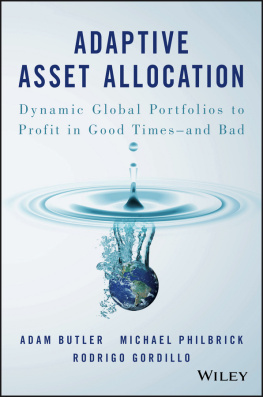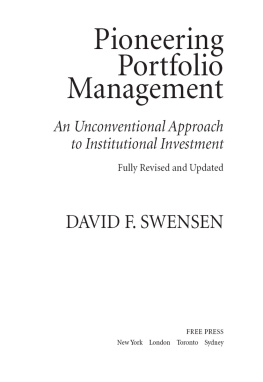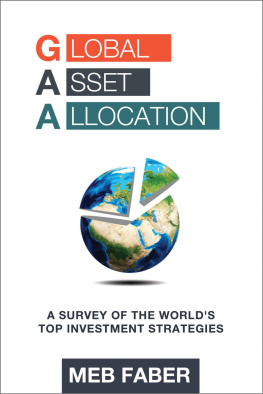THE NEW
ARTICULATE EXECUTIVE
Look, Act, and Sound Like a Leader
GRANVILLE N. TOOGOOD

For Carolyn and Wayne

Copyright 2010 by The McGraw-Hill Companies, Inc. All rights reserved. Except as permitted under the United States Copyright Act of 1976, no part of this publication may be reproduced or distributed in any form or by any means, or stored in a database or retrieval system, without the prior written permission of the publisher.
ISBN: 978-0-07-174591-8
MHID: 0-07-174591-2
The material in this eBook also appears in the print version of this title: ISBN: 978-0-07-174326-6, MHID: 0-07-174326-X.
All trademarks are trademarks of their respective owners. Rather than put a trademark symbol after every occurrence of a trademarked name, we use names in an editorial fashion only, and to the benefit of the trademark owner, with no intention of infringement of the trademark. Where such designations appear in this book, they have been printed with initial caps.
McGraw-Hill eBooks are available at special quantity discounts to use as premiums and sales promotions, or for use in corporate training programs. To contact a representative please e-mail us at bulksales@mcgraw-hill.com.
This publication is designed to provide accurate and authoritative information in regard to the subject matter covered. It is sold with the understanding that neither the author nor the publisher is engaged in rendering legal, accounting, securities trading, or other professional services. If legal advice or other expert assistance is required, the services of a competent professional person should be sought.
From a Declaration of Principles Jointly Adopted by a Committee of the
American Bar Association and a Committee of Publishers and Associations
TERMS OF USE
This is a copyrighted work and The McGraw-Hill Companies, Inc. (McGraw-Hill) and its licensors reserve all rights in and to the work. Use of this work is subject to these terms. Except as permitted under the Copyright Act of 1976 and the right to store and retrieve one copy of the work, you may not decompile, disassemble, reverse engineer, reproduce, modify, create derivative works based upon, transmit, distribute, disseminate, sell, publish or sublicense the work or any part of it without McGraw-Hills prior consent. You may use the work for your own noncommercial and personal use; any other use of the work is strictly prohibited. Your right to use the work may be terminated if you fail to comply with these terms.
THE WORK IS PROVIDED AS IS. McGRAW-HILL AND ITS LICENSORS MAKE NO GUARANTEES OR WARRANTIES AS TO THE ACCURACY, ADEQUACY OR COMPLETENESS OF OR RESULTS TO BE OBTAINED FROM USING THE WORK, INCLUDING ANY INFORMATION THAT CAN BE ACCESSED THROUGH THE WORK VIA HYPERLINK OR OTHERWISE, AND EXPRESSLY DISCLAIM ANY WARRANTY, EXPRESS OR IMPLIED, INCLUDING BUT NOT LIMITED TO IMPLIED WARRANTIES OF MERCHANTABILITY OR FITNESS FOR A PARTICULAR PURPOSE. McGraw-Hill and its licensors do not warrant or guarantee that the functions contained in the work will meet your requirements or that its operation will be uninterrupted or error free. Neither McGraw-Hill nor its licensors shall be liable to you or anyone else for any inaccuracy, error or omission, regardless of cause, in the work or for any damages resulting there from. McGraw-Hill has no responsibility for the content of any information accessed through the work. Under no circumstances shall McGraw-Hill and/or its licensors be liable for any indirect, incidental, special, punitive, consequential or similar damages that result from the use of or inability to use the work, even if any of them has been advised of the possibility of such damages. This limitation of liability shall apply to any claim or cause whatsoever whether such claim or cause arises in contract, tort or otherwise.
CONTENTS
INTRODUCTION
Where Are We?
NINETEENTH-CENTURY AMERICA WITNESSED the golden age of the oratorpeopled by rhetorical giants such as Abraham Lincoln, Mark Twain, Henry Clay, Frederick Douglass, Daniel Webster, John C. Calhoun, and Phillip Brooks, among many others. By the power of their words alone, these masters of the language helped us understand who we are and for generations steered the political and cultural evolution of the great American story.
The twentieth century saw the rapid rise of mass communication and media. Newspaper empires sprang up in the United States and Britain. Science fiction morphed into reality as radio, and then television changed our lives in ways we could never have imagined. A tiny community of orange orchards in California spread the fantastic magic of a new art form called the motion picture around the world.
In the twenty-first century we are still in the pioneering phase of exploring new frontiers as different from radio, TV, and newspapers as talkie color movies were from silent black-and-white films. We are in the dawn of the age of social media. A quick visit to Google will tell you that social media has hundreds of life-forms, endless definitions, thousands of experts, countless books on the subject, and tens of millions, soon perhaps billions, of discrete voices all clamoring to be heard. Social media is a chaotic, jubilant expression of personal freedom and affirmation, a forum for all, a universal ocean of connectivity and interrelationships unlike anything the world has ever seenand its getting bigger every day.
Barack Obama was the first U.S. president to successfully surf the wave of social media (until recently also sometimes referred to as new media) and ride it all the way to the White House. As the contest heated up in 2008, his campaign ignited political buzz with chat rooms and posted daily barrages of online clips showing the candidate in action and talking in sound bites. In effect, social media put the candidate on the air (in this case, in The Cloud or Ethernet) twenty-four-seven and kept an interactive dialogue of millions of Americansmostly his target audience of younger votersstoked and buzzing right up to election day. Some pundits have suggested Obamas success in the voting booth was due in part to his mastery of the new media such as YouTube and Twitter, while the McCain campaign relied far more on old media, such as newspapers, magazines, and traditional networks.
So social media can be a great political resource, and we will see more of social media in future campaigns. But without a candidate, social media is just a tool and can never take the place of the candidate. Without Obama, social media was just social media.
No one knows how big social media will eventually become, how far it will go, or how it will ultimately effect and influence our behaviors. No doubt social media will present opportunities for future business leaders. But it can never trump flesh-and-blood transactions and interactions. Twitter, Google, Facebook, YouTube, LinkedIn, and more on the way can help market your businessand youbut they can never be you.
Social media can never be:
the new CEO who so impresses the analysts that the stock soars 20 percent the next day
the team leader who drives productivity up 15 percent
the entrepreneur who articulates the vision that shapes a whole new industry and makes markets
the salesperson who keeps raising the bar year after year
the coach who breaks through mental barriers to forge a championship team from mediocrity








